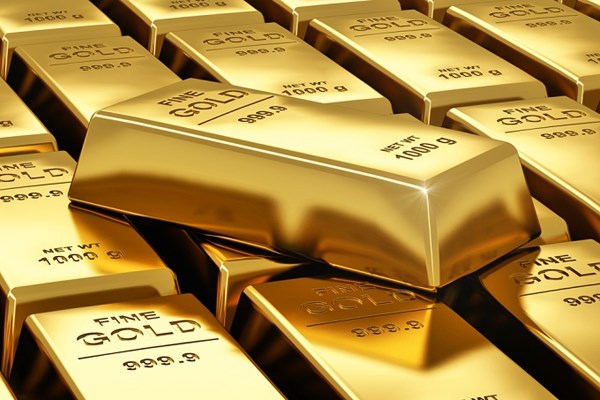Kremlin loses $3 billion in 3 days to gold price drop
The biggest drop in the international gold price in more than a year has had a drastic effect on the value of the Bank of Russia’s reserves.
In just over three trading days, the price per troy ounce slipped by 3.4% from $1,330 to $1,285, and had fallen by 2.6% at the end of last week, the worst result since May 2017, finanz.ru reports.
The price reached an intraday low of $1283.3 on Monday, the lowest price since 25 January.
For the Bank of Russia, which is buying all the gold that is being mined in the country, and which had a stockpile of 69.2 million troy ounces as of 1 February, this equates to a drop in value of at least $3.1 billion.
On 27 February, the bank’s gold reserves were worth $92 billion, but by 18:30 Moscow time on Monday their value had fallen to $88.9 billion. In reality, the losses could easily be much greater if the Russian central bank were to start selling off its gold reserves.
By the end of 2018, the Bank of Russia had purchased a record 274 tons of the precious metal, effectively emptying the domestic market and leaving producers with only 17 tons to export. Its rate of purchase was nearly three times as much as at the start of the 2010s, and around 30% more than between 2014-2017, when Russia came under pressure from the first round of western sanctions.
It is once again sanctions and the threat of further sanctions that are forcing Russia’s central bank to bolster its gold reserves, explained the bank’s deputy chairman Dmitry Tulin in August: unlike foreign currency and securities in offshore accounts, gold ingots held in Russia cannot be seized.
Even though gold is of little value as a reserve asset, and large amounts cannot be exchanged quickly without affecting the market price significantly, these gold purchases are not costing the Bank of Russia anything. All of the gold is being bought through ruble emissions, in other words, through freshly printed money, explained Kirill Tremasov, director of the analysis department at Loco-Invest.
Effectively, using its “printing press”, the central bank is supporting the price of its already accumulated gold reserves. Russia’s gold mining, which accounts for roughly 7% of world quantities, has been completely taken off the world market. If the 300 tons mined by Russia were to return to the global markets, it could result in a surplus, according to estimates by the World Gold Council.
The drop in the gold price at the start of March is the market’s reaction to strong US economic data, which rekindled fears that the Federal Reserve System will tighten its policy, observes TD Securities strategist Bart Melek.
In the fourth quarter, the US GDP grew at a rate of 2.6%, significantly exceeding the prediction (2.3%) and bringing the American economy’s annual growth up from 2.2% to 2.9%.
This data reduces the likelihood of the FDS easing its monetary policy, especially the suspension of its balance reduction, Melek notes: This will push up the dollar index, which set a two-week high on Monday, as well as the yield on US government bonds.
